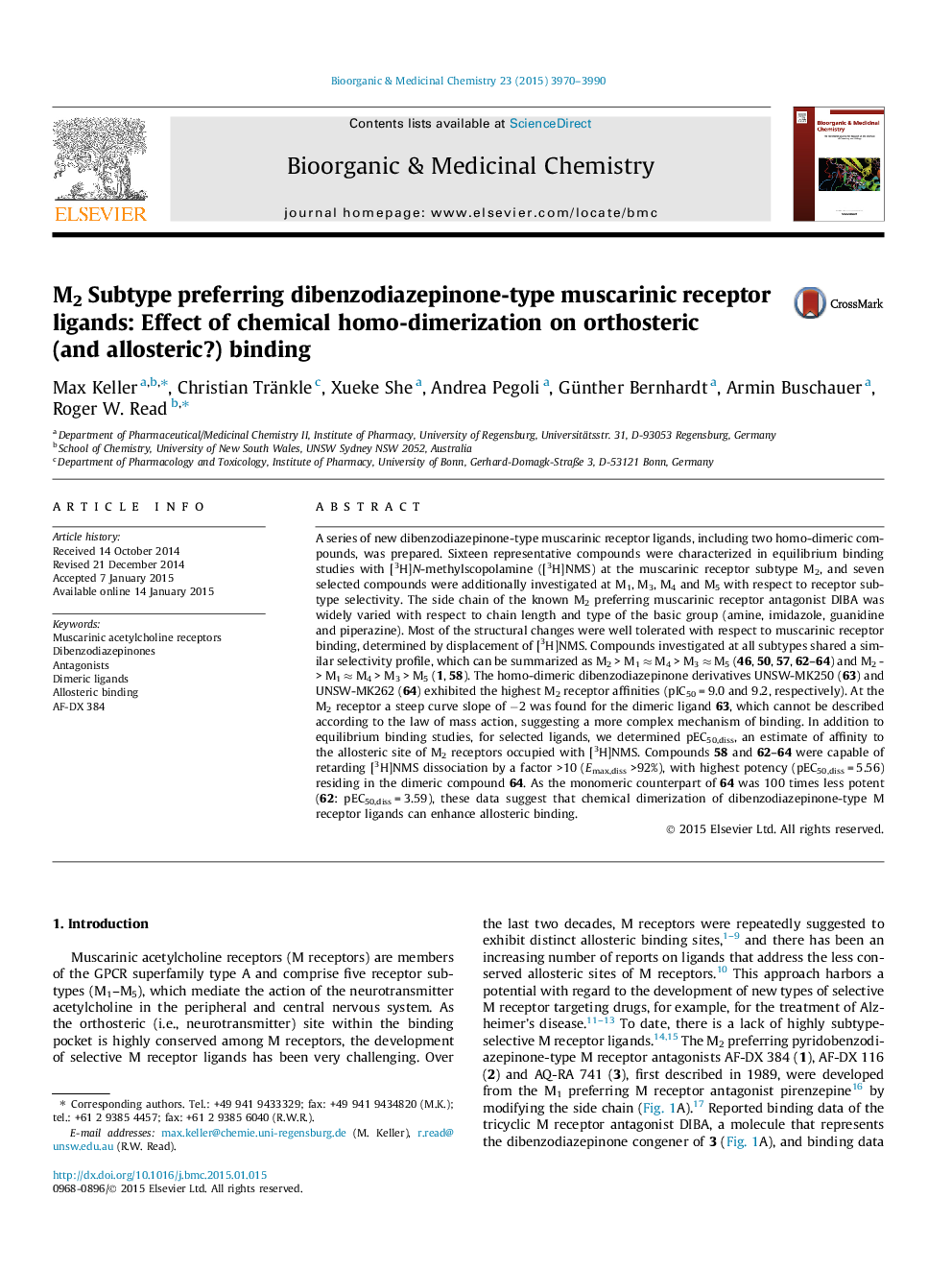| کد مقاله | کد نشریه | سال انتشار | مقاله انگلیسی | نسخه تمام متن |
|---|---|---|---|---|
| 1357579 | 981261 | 2015 | 21 صفحه PDF | دانلود رایگان |

A series of new dibenzodiazepinone-type muscarinic receptor ligands, including two homo-dimeric compounds, was prepared. Sixteen representative compounds were characterized in equilibrium binding studies with [3H]N-methylscopolamine ([3H]NMS) at the muscarinic receptor subtype M2, and seven selected compounds were additionally investigated at M1, M3, M4 and M5 with respect to receptor subtype selectivity. The side chain of the known M2 preferring muscarinic receptor antagonist DIBA was widely varied with respect to chain length and type of the basic group (amine, imidazole, guanidine and piperazine). Most of the structural changes were well tolerated with respect to muscarinic receptor binding, determined by displacement of [3H]NMS. Compounds investigated at all subtypes shared a similar selectivity profile, which can be summarized as M2 > M1 ≈ M4 > M3 ≈ M5 (46, 50, 57, 62–64) and M2 > M1 ≈ M4 > M3 > M5 (1, 58). The homo-dimeric dibenzodiazepinone derivatives UNSW-MK250 (63) and UNSW-MK262 (64) exhibited the highest M2 receptor affinities (pIC50 = 9.0 and 9.2, respectively). At the M2 receptor a steep curve slope of −2 was found for the dimeric ligand 63, which cannot be described according to the law of mass action, suggesting a more complex mechanism of binding. In addition to equilibrium binding studies, for selected ligands, we determined pEC50,diss, an estimate of affinity to the allosteric site of M2 receptors occupied with [3H]NMS. Compounds 58 and 62–64 were capable of retarding [3H]NMS dissociation by a factor >10 (Emax,diss >92%), with highest potency (pEC50,diss = 5.56) residing in the dimeric compound 64. As the monomeric counterpart of 64 was 100 times less potent (62: pEC50,diss = 3.59), these data suggest that chemical dimerization of dibenzodiazepinone-type M receptor ligands can enhance allosteric binding.
Figure optionsDownload as PowerPoint slide
Journal: Bioorganic & Medicinal Chemistry - Volume 23, Issue 14, 15 July 2015, Pages 3970–3990